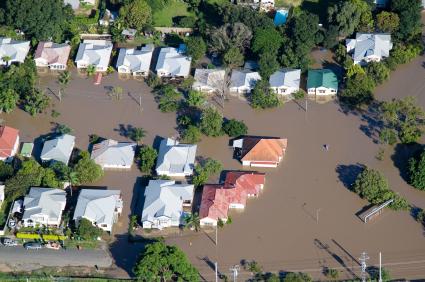 Hurricane Sandy’s treatment of the East Coast offers a warning that floods aren’t just located in Florida and Louisiana.
Hurricane Sandy’s treatment of the East Coast offers a warning that floods aren’t just located in Florida and Louisiana.
It’s also a reminder that homeowners need a separate flood policy to cover the damage.
Flood insurance is available in the form of a separate policy from both the federal government’s National Flood Insurance Program and from a few private insurers. Properties situated in a designated flood zone generally have flood insurance policies covering them, according to the Insurance Information Institute.
Hurricane Irene generated nearly $1.3 billion in insured flood claim payouts in August 2011, making Irene the fourth costliest flood event in this nation’s history. Hurricane Katrina caused more than $16 billion in insured flood damage after Katrina made landfall in August 2005. Katrina remains by far the costliest flood event in U.S. history.
The NFIP policy provides coverage for up to $250,000 for the structure of the home and $100,000 for personal possessions. The NFIP policy provides replacement cost coverage for the structure of a home, but only actual cash value coverage for possessions.
Replacement cost coverage pays to rebuild a home as it was before the damage occurred. Actual cash value is replacement cost coverage minus depreciation. The older someone’s possessions are, the less they’ll receive in compensation if there’s damage. There may also be limits on coverage for furniture and other belongings stored in a basement.
There is a 30-day waiting period before this type of coverage takes effect so as to discourage last-minute flood insurance policy purchases.
Excess flood insurance is also available from some private insurers if you need additional insurance protection over and above the basic NFIP policy or if your community does not participate in the NFIP.
Depending on the amount of coverage purchased, an excess flood insurance policy will cover damage over and above the limits of the federal program on the same basis as the federal program—replacement cost for the structure and actual cash value for the contents.
Excess flood insurance is available in all parts of the country wherever the federal program is available—in high risk flood zones along the coast and close to major rivers, as well as in areas of lower risk.
It can be purchased from specialized companies through independent insurance agents or from regular homeowners insurance companies that have arrangements with a specialized insurer to provide flood coverage to their policyholders.
For an in-depth look at flood insurance, see our story “When the waters rise: The need for flood insurance.”












